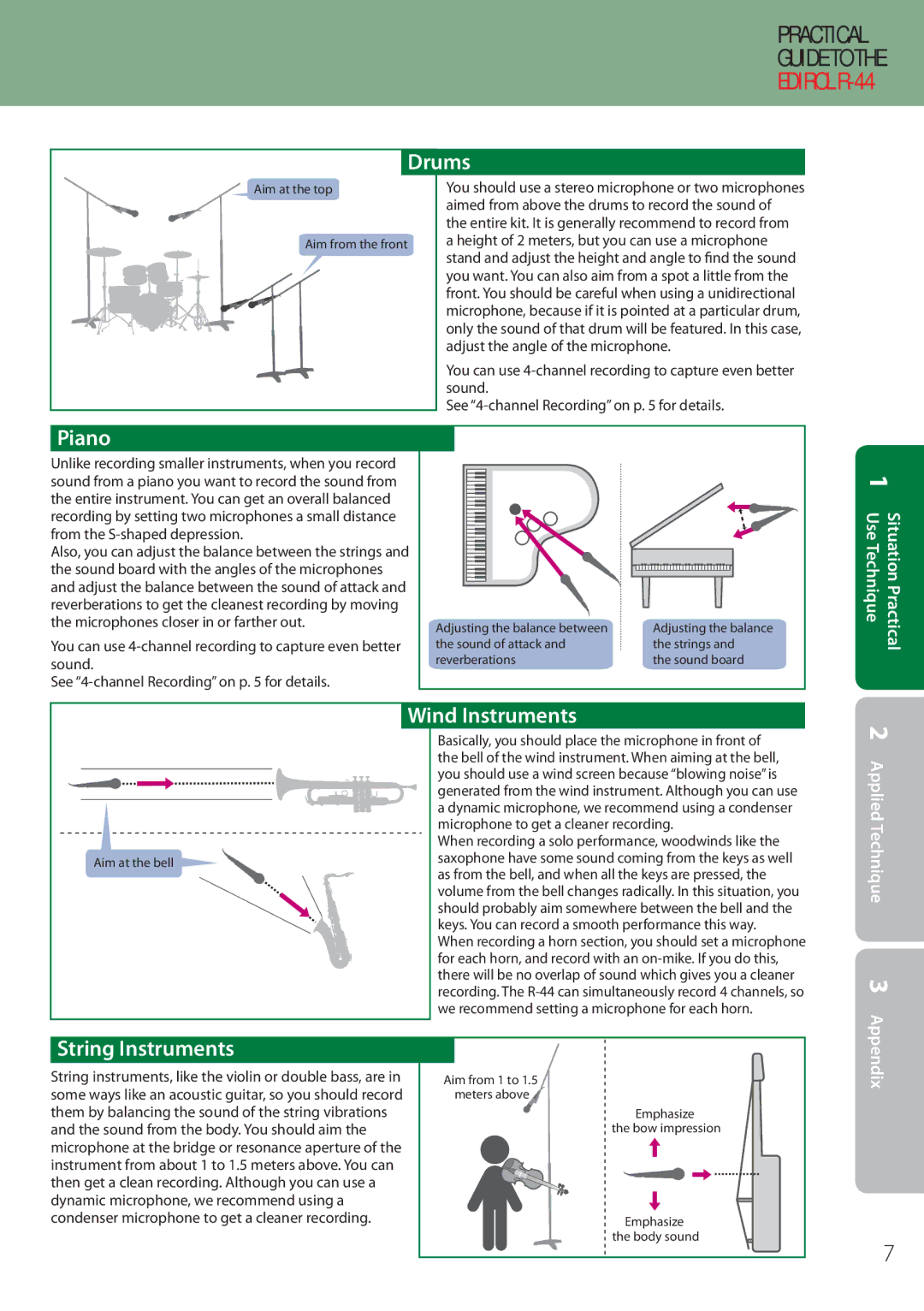
PRACTICAL
GUIDE TO THE
EDIROL
Drums
Aim at the top
Aim from the front
You should use a stereo microphone or two microphones aimed from above the drums to record the sound of the entire kit. It is generally recommend to record from a height of 2 meters, but you can use a microphone stand and adjust the height and angle to find the sound you want. You can also aim from a spot a little from the front. You should be careful when using a unidirectional microphone, because if it is pointed at a particular drum, only the sound of that drum will be featured. In this case, adjust the angle of the microphone.
You can use
See
Piano
Unlike recording smaller instruments, when you record sound from a piano you want to record the sound from the entire instrument. You can get an overall balanced recording by setting two microphones a small distance from the
Also, you can adjust the balance between the strings and the sound board with the angles of the microphones and adjust the balance between the sound of attack and reverberations to get the cleanest recording by moving the microphones closer in or farther out.
You can use
See
Adjusting the balance between | Adjusting the balance |
the sound of attack and | the strings and |
reverberations | the sound board |
Situation Practical 1 Use Technique
Wind Instruments
Basically, you should place the microphone in front of the bell of the wind instrument. When aiming at the bell, you should use a wind screen because “blowing noise” is generated from the wind instrument. Although you can use a dynamic microphone, we recommend using a condenser microphone to get a cleaner recording.
When recording a solo performance, woodwinds like the
Aim at the bell ![]() saxophone have some sound coming from the keys as well as from the bell, and when all the keys are pressed, the volume from the bell changes radically. In this situation, you should probably aim somewhere between the bell and the keys. You can record a smooth performance this way.
saxophone have some sound coming from the keys as well as from the bell, and when all the keys are pressed, the volume from the bell changes radically. In this situation, you should probably aim somewhere between the bell and the keys. You can record a smooth performance this way.
When recording a horn section, you should set a microphone for each horn, and record with an
2 Applied Technique 3
String Instruments
String instruments, like the violin or double bass, are in some ways like an acoustic guitar, so you should record them by balancing the sound of the string vibrations and the sound from the body. You should aim the microphone at the bridge or resonance aperture of the instrument from about 1 to 1.5 meters above. You can then get a clean recording. Although you can use a dynamic microphone, we recommend using a condenser microphone to get a cleaner recording.
Aim from 1 to 1.5 meters above
Emphasize the bow impression
Emphasize the body sound
Appendix
7
